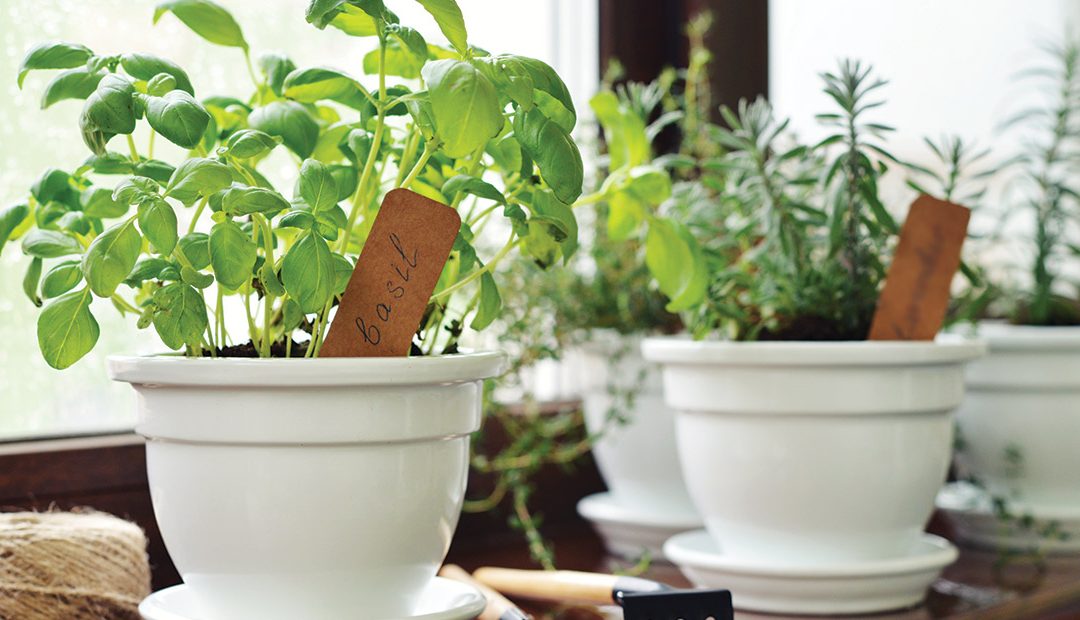While many consider autumn the most beautiful time of year, it is also the time when gardeners have to start moving their operation indoors. While growing garden vegetables indoors is not always a great idea, it is entirely possible to enjoy your gardening in the winter time with a windowsill herb garden.
Starting an herb garden inside is relatively easy, as most herbs will readily grow in those conditions. While a medium-sized clay container is best for drainage and air flow, almost any appropriately sized container with good drainage will do.
For soil, a three-part mix of potting soil, peat, and sand will keep your indoor herbs happy and healthy. Any south- or southeast-facing window should be perfect for an indoor herb garden, but light can be supplemented with a small fluorescent fixture if needed.
Some easy herbs to start with are basil, cilantro, oregano, parsley, and sage. They all have similar light and care requirements and can thrive in a windowsill garden setting. Here are some specific tips for growing and harvesting these herbs indoors:
- Basil — Make sure you pick a smaller, globe variety; the larger kinds will be too big for an indoor garden. Harvest in the morning for best results, and pick leaves rather than cutting stems. Also, pinching the branch tips will encourage growth and help the plant to fill out.
- Cilantro — Cilantro needs slightly more nutrients than some other herbs, as the roots can’t spread as much in a container. Harvest at least once a week to keep the plant from bolting. When harvesting, cut the top third of the stems. Freeze the cuttings if not needed right away.
- Oregano — Oregano likes to dry out between watering, so water less often than other herbs. There are two common varieties of oregano. Mediterranean oregano tends to be more lemony flavored, while Mexican oregano has a mintier flavor. Growing requirements are the same, however. When harvesting, let the stems grow to at least 4 inches, then clip off about one-third of the stem. It won’t hurt to cut more, but make sure to leave enough showing for new growth.
- Parsley — Keep the soil moist by making sure you either mist the leaves regularly or set the plant in an area with proper humidity. Harvest by clipping the outer stems at the base, thereby allowing the center to create new growth and preventing the parsley from getting “leggy.”
- Sage — Sage has the same basic soil and drainage requirements as the other herbs; it just needs more light. Let the growing medium dry out between watering. When harvesting, clip just above where leaves meet. Sage tastes better when harvested early in the morning.
An indoor herb garden is both easy to grow and rewarding to have. With fresh herbs at your fingertips, not only will your meals be far more flavorful, but the indoor plants also help to improve air quality throughout the home.
Final tip: When growing herbs or any plants for consumption, remember to use an organic fertilizer. For indoor herbs, dilute the fertilizer 50% with water to avoid burning the plant.












